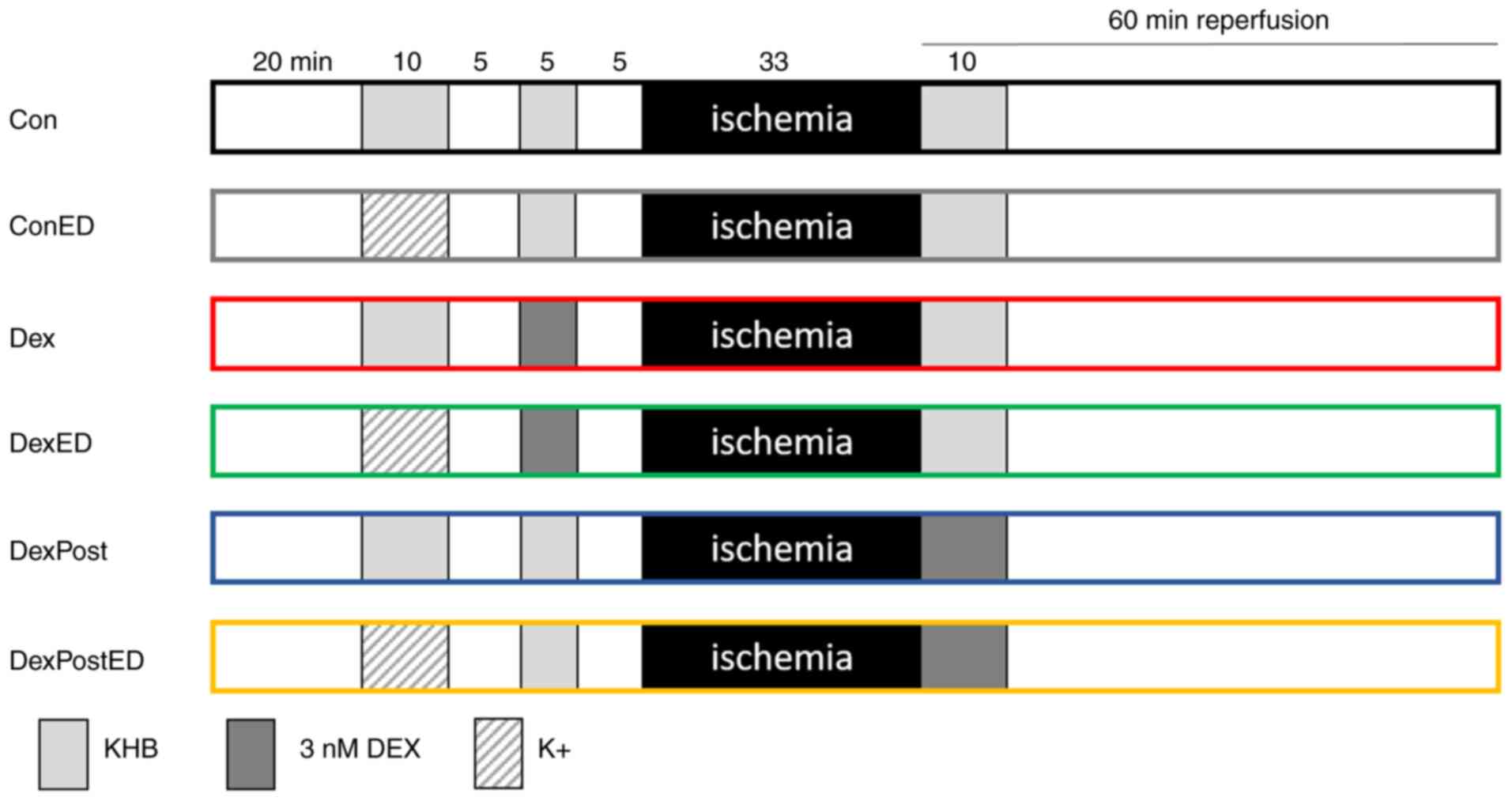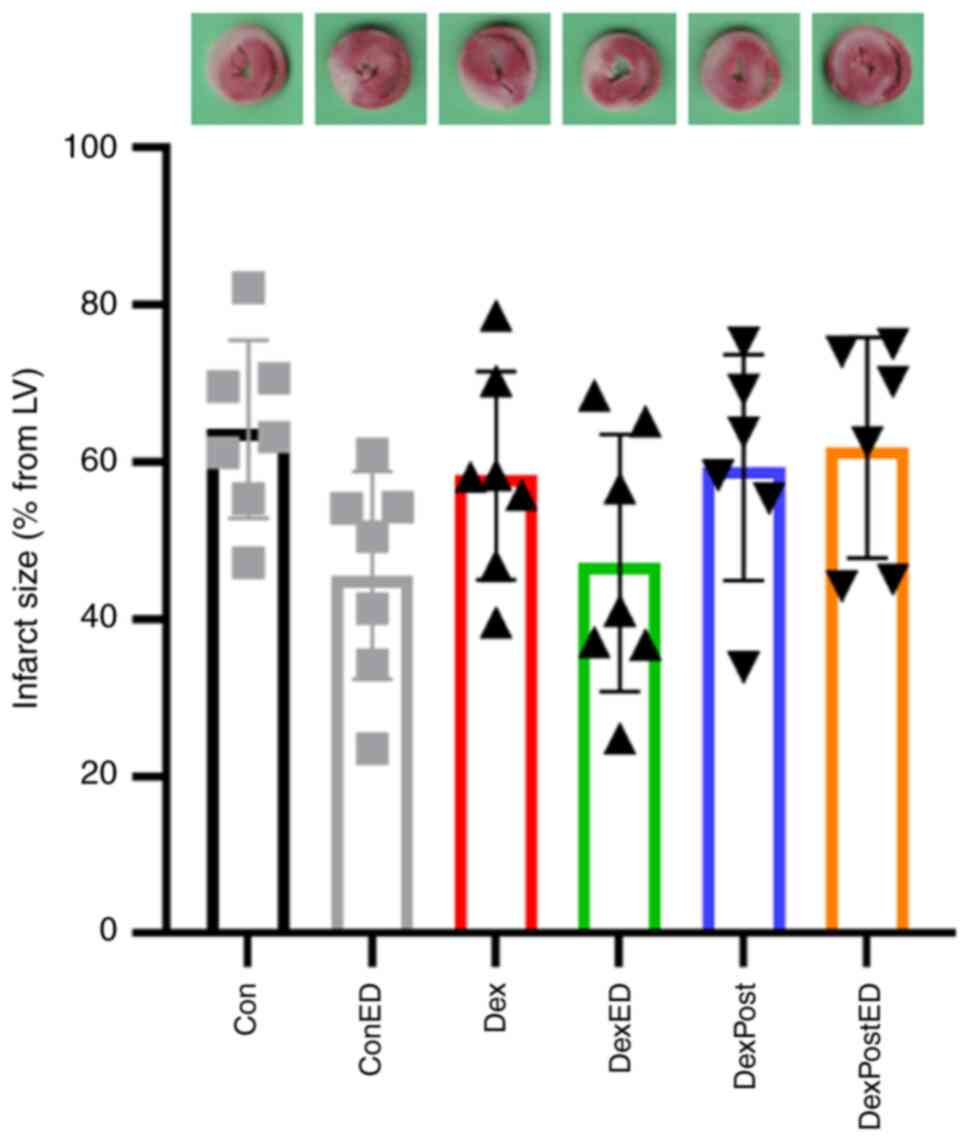|
1
|
Heusch G: Cardioprotection and its
translation: A need for new paradigms? Or for new pragmatism? An
opinionated retro- and perspective. J Cardiovasc Pharmacol Ther.
28(10742484231179613)2023.PubMed/NCBI View Article : Google Scholar
|
|
2
|
Virani SS, Alonso A, Benjamin EJ,
Bittencourt MS, Callaway CW, Carson AP, Chamberlain AM, Chang AR,
Cheng S, Delling FN, et al: Heart disease and stroke
statistics-2020 update: A report from the American heart
association. Circulation. 141:e139–e596. 2020.PubMed/NCBI View Article : Google Scholar
|
|
3
|
Kleinbongard P, Botker HE, Ovize M,
Hausenloy DJ and Heusch G: Co-morbidities and co-medications as
confounders of cardioprotection-Does it matter in the clinical
setting? Br J Pharmacol. 177:5252–5269. 2020.PubMed/NCBI View Article : Google Scholar
|
|
4
|
Segers VFM, Bringmans T and De Keulenaer
GW: Endothelial dysfunction at the cellular level in three
dimensions: Severity, acuteness, and distribution. Am J Physiol
Heart Circ Physiol. 325:H398–H413. 2023.PubMed/NCBI View Article : Google Scholar
|
|
5
|
Roy R, Wilcox J, Webb AJ and O'Gallagher
K: Dysfunctional and dysregulated nitric oxide synthases in
cardiovascular disease: Mechanisms and therapeutic potential. Int J
Mol Sci. 24(15200)2023.PubMed/NCBI View Article : Google Scholar
|
|
6
|
Cyr AR, Huckaby LV, Shiva SS and
Zuckerbraun BS: Nitric oxide and endothelial dysfunction. Crit Care
Clin. 36:307–321. 2020.PubMed/NCBI View Article : Google Scholar
|
|
7
|
Behmenburg F, Pickert E, Mathes A, Heinen
A, Hollmann MW, Huhn R and Berger MM: The cardioprotective effect
of dexmedetomidine in rats is dose-dependent and mediated by BKCa
channels. J Cardiovasc Pharmacol. 69:228–235. 2017.PubMed/NCBI View Article : Google Scholar
|
|
8
|
Bunte S, Behmenburg F, Majewski N,
Stroethoff M, Raupach A, Mathes A, Heinen A, Hollmann MW and Huhn
R: Characteristics of dexmedetomidine postconditioning in the field
of myocardial ischemia-reperfusion injury. Anesth Analg. 130:90–98.
2020.PubMed/NCBI View Article : Google Scholar
|
|
9
|
He L, Hao S, Wang Y, Yang W, Liu L, Chen H
and Qian J: Dexmedetomidine preconditioning attenuates
ischemia/reperfusion injury in isolated rat hearts with endothelial
dysfunction. Biomed Pharmacother. 114(108837)2019.PubMed/NCBI View Article : Google Scholar
|
|
10
|
Torregroza C, Feige K, Schneider L, Bunte
S, Stroethoff M, Heinen A, Hollmann MW, Huhn R and Raupach A:
Influence of hyperglycemia on dexmedetomidine-induced
cardioprotection in the isolated perfused rat heart. J Clin Med.
9(1445)2020.PubMed/NCBI View Article : Google Scholar
|
|
11
|
Castillo RL, Ibacache M, Cortinez I,
Carrasco-Pozo C, Farías JG, Carrasco RA, Vargas-Errázuriz P, Ramos
D, Benavente R, Torres DH and Méndez A: Dexmedetomidine Improves
Cardiovascular and ventilatory outcomes in critically Ill patients:
Basic and clinical approaches. Front Pharmacol.
10(1641)2019.PubMed/NCBI View Article : Google Scholar
|
|
12
|
Skrzypiec-Spring M, Grotthus B, Szelag A
and Schulz R: Isolated heart perfusion according to
Langendorff-still viable in the new millennium. J Pharmacol Toxicol
Methods. 55:113–126. 2007.PubMed/NCBI View Article : Google Scholar
|
|
13
|
Cartier R, Pellerin M, Hollmann C and
Pelletier LC: Effects of pressure and duration of hyperkalemic
infusions on endothelial function. Ann Thorac Surg. 55:700–705.
1993.PubMed/NCBI View Article : Google Scholar
|
|
14
|
Raupach A, Karakurt E, Torregroza C, Bunte
S, Feige K, Stroethoff M, Brandenburger T, Heinen A, Hollmann MW
and Huhn R: Dexmedetomidine provides cardioprotection during early
or late reperfusion mediated by different mitochondrial
K+-channels. Anesth Analg. 132:253–260. 2021.PubMed/NCBI View Article : Google Scholar
|
|
15
|
Faul F, Erdfelder E, Lang AG and Buchner
A: G*Power 3: A flexible statistical power analysis program for the
social, behavioral, and biomedical sciences. Behav Res Methods.
39:175–191. 2007.PubMed/NCBI View Article : Google Scholar
|
|
16
|
Wang L, Liu J, Wang Z, Qian X, Zhao Y,
Wang Q, Dai N, Xie Y, Zeng W, Yang W, et al: Dexmedetomidine abates
myocardial ischemia reperfusion injury through inhibition of
pyroptosis via regulation of miR-665/MEF2D/Nrf2 axis. Biomed
Pharmacother. 165(115255)2023.PubMed/NCBI View Article : Google Scholar
|
|
17
|
Okada H, Kurita T, Mochizuki T, Morita K
and Sato S: The cardioprotective effect of dexmedetomidine on
global ischaemia in isolated rat hearts. Resuscitation. 74:538–545.
2007.PubMed/NCBI View Article : Google Scholar
|
|
18
|
Takahashi K, Yoshikawa Y, Kanda M, Hirata
N and Yamakage M: Dexmedetomidine as a cardioprotective drug: A
narrative review. J Anesth. 37:961–970. 2023.PubMed/NCBI View Article : Google Scholar
|
|
19
|
Yoshikawa Y, Hirata N, Kawaguchi R,
Tokinaga Y and Yamakage M: Dexmedetomidine maintains its direct
cardioprotective effect against ischemia/reperfusion injury in
hypertensive hypertrophied myocardium. Anesth Analg. 126:443–452.
2018.PubMed/NCBI View Article : Google Scholar
|
|
20
|
Mimuro S, Katoh T, Suzuki A, Yu S, Adachi
YU, Uraoka M, Sano H and Sato S: Deterioration of myocardial injury
due to dexmedetomidine administration after myocardial ischaemia.
Resuscitation. 81:1714–1717. 2010.PubMed/NCBI View Article : Google Scholar
|
|
21
|
Riquelme JA, Westermeier F, Hall AR,
Vicencio JM, Pedrozo Z, Ibacache M, Fuenzalida B, Sobrevia L,
Davidson SM, Yellon DM, et al: Dexmedetomidine protects the heart
against ischemia-reperfusion injury by an endothelial eNOS/NO
dependent mechanism. Pharmacol Res. 103:318–327. 2016.PubMed/NCBI View Article : Google Scholar
|
|
22
|
Ghasemi A and Jeddi S: Quantitative
aspects of nitric oxide production in the heart. Mol Biol Rep.
49:11113–11122. 2022.PubMed/NCBI View Article : Google Scholar
|
|
23
|
Ibacache M, Sanchez G, Pedrozo Z, Galvez
F, Humeres C, Echevarria G, Duaso J, Hassi M, Garcia L, Díaz-Araya
G and Lavandero S: Dexmedetomidine preconditioning activates
pro-survival kinases and attenuates regional ischemia/reperfusion
injury in rat heart. Biochim Biophys Acta. 1822:537–545.
2012.PubMed/NCBI View Article : Google Scholar
|
|
24
|
Trejo-Moreno C, Jimenez-Ferrer E,
Castro-Martinez G, Méndez-Martínez M, Santana MA, Arrellín-Rosas G,
Pedraza-Chaverri J, Medina-Campos ON, Hernández-Téllez B,
Ramírez-Pliego O, et al: Characterization of a murine model of
endothelial dysfunction induced by chronic intraperitoneal
administration of angiotensin II. Sci Rep. 11(21193)2021.PubMed/NCBI View Article : Google Scholar
|
|
25
|
Khaliulin I, Clarke SJ, Lin H, Parker J,
Suleiman MS and Halestrap AP: Temperature preconditioning of
isolated rat hearts-a potent cardioprotective mechanism involving a
reduction in oxidative stress and inhibition of the mitochondrial
permeability transition pore. J Physiol. 581:1147–1161.
2007.PubMed/NCBI View Article : Google Scholar
|
|
26
|
Querio G, Geddo F, Antoniotti S, Gallo MP
and Penna C: Sex and response to cardioprotective conditioning
maneuvers. Front Physiol. 12(667961)2021.PubMed/NCBI View Article : Google Scholar
|
|
27
|
Vincent KF, Mallari OG, Dillon EJ, Stewart
VG, Cho AJ, Dong Y, Edlow AG, Ichinose F, Xie Z and Solt K:
Oestrous cycle affects emergence from anaesthesia with
dexmedetomidine, but not propofol, isoflurane, or sevoflurane, in
female rats. Br J Anaesth. 131:67–78. 2023.PubMed/NCBI View Article : Google Scholar
|
|
28
|
Ding Y, Liu A, Wang Y, Zhao S, Huang S,
Zhu H, Ma L, Han L, Shu S, Zheng L and Chen X: Genetic
polymorphisms are associated with individual susceptibility to
dexmedetomidine. Front Genet. 14(1187415)2023.PubMed/NCBI View Article : Google Scholar
|
















